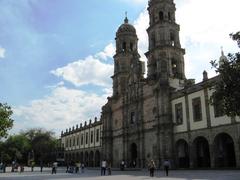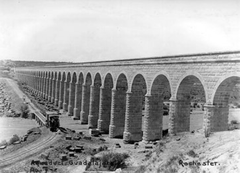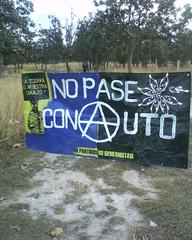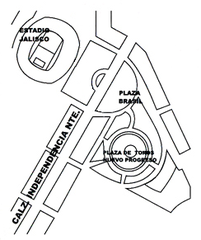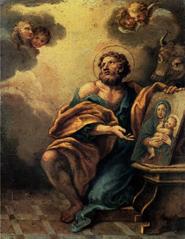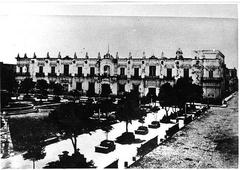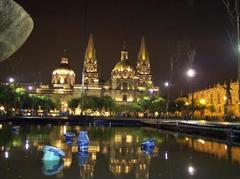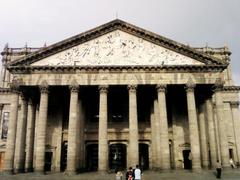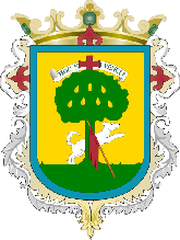Visiting the Statue of Miguel Hidalgo y Costilla in Guadalajara, Mexico: Tickets, Hours, and Tips
Date: 04/07/2025
Introduction
The Statue of Miguel Hidalgo y Costilla in Guadalajara is a powerful monument honoring the Father of Mexican Independence. Set in the heart of the city at Plaza de la Liberación, this striking bronze sculpture not only commemorates Hidalgo’s historic abolition of slavery and his role in Mexico’s independence movement but also serves as a vibrant focal point for civic life, public celebrations, and cultural events. This comprehensive guide covers the statue’s historical context, artistic significance, practical visitor details—including hours, accessibility, and nearby attractions—and tips for making the most of your visit. Whether you are a history enthusiast, art lover, or curious traveler, this guide will help you appreciate the enduring legacy of Miguel Hidalgo and the cultural richness of Guadalajara’s historic center (Wikipedia; Mexico Relocation Guide; Guadalajarízate; The Crazy Tourist).
Who Was Miguel Hidalgo y Costilla?
Miguel Hidalgo y Costilla (1753–1811) was a Mexican priest and revolutionary leader whose progressive ideals and bold actions helped ignite the Mexican War of Independence. Educated in philosophy and theology, Hidalgo became known for advocating the rights of indigenous peoples and the poor. His most famous act—the “Grito de Dolores” on September 16, 1810—called for rebellion against Spanish colonial rule and is celebrated annually as Mexican Independence Day (Wikipedia; Encyclopedia.com; MexConnect).
During his campaign, Hidalgo’s forces entered Guadalajara, where he issued the first decree abolishing slavery in Mexico and launched the country’s first insurgent newspaper, “El Despertador Americano.” Although his movement faced setbacks, Hidalgo’s vision of liberty and justice had a lasting impact on the nation’s identity (Mexico Relocation Guide).
The Monument: Artistic and Symbolic Significance
Setting and Design
The statue stands in Plaza de la Liberación, a historically significant square in Guadalajara’s Centro Histórico. Created as part of a 1952 urban renewal project, the monument is attributed to architect Ignacio Díaz Morales (with some credit also given to sculptor José Chávez Morado) and stands approximately 4 meters tall. It dramatically portrays Hidalgo breaking the chains of slavery—a vivid symbol of liberation and social justice (Wikipedia; Guadalajarízate).
Unlike more traditional, static depictions, this statue captures Hidalgo in a dynamic, intense moment, emphasizing his passionate leadership. His determined stance and forward gaze represent the ongoing struggle for freedom, while the broken chains at his feet reference his historic abolition of slavery in Guadalajara in 1810 (MexicoHistorico.com).
Civic and Cultural Centerpiece
Plaza de la Liberación, named in honor of Hidalgo’s abolition of slavery, is a lively gathering spot for locals and visitors. The statue is not only a landmark for tourists but also a centerpiece for public events, especially during Independence Day celebrations on September 16. Its central location—fronting the Legislative Palace and near the Guadalajara Cathedral—links the city’s political, religious, and cultural institutions, reinforcing the monument’s role as a guardian of democratic values (Guadalajarízate; Playas y Plazas).
Practical Visitor Information
Location
- Plaza de la Liberación, Centro Histórico, Guadalajara
- Easily walkable from major city landmarks: Guadalajara Cathedral, Palacio de Gobierno, and Teatro Degollado (The Crazy Tourist).
Visiting Hours
- Open 24/7 as the statue is located in a public plaza.
Tickets and Admission
- Free admission. No tickets are required to visit the statue or plaza.
Accessibility
- The plaza is wheelchair accessible, with flat, paved surfaces and ramps.
- Public transport (buses, light rail), taxis, and ride-share services all serve the area.
- Bicycle rental stations are nearby (Playas y Plazas).
Best Times to Visit
- Daytime visits are recommended for safety and atmosphere.
- Early morning and late afternoon offer the best lighting for photography.
- The city is especially lively during cultural festivals and on weekends.
- Optimal season: October to December, with pleasant weather and festive events (Travellers Worldwide).
Safety Tips
- The area is generally safe, but standard city precautions apply: be mindful of valuables, avoid deserted areas at night, and stay alert during big crowds (Playas y Plazas).
Nearby Attractions
- Guadalajara Cathedral: Stunning 16th-century architecture.
- Palacio de Gobierno: Home to Orozco murals depicting Hidalgo.
- Teatro Degollado: Renowned neoclassical theater.
- Plaza de Armas & Plaza Guadalajara: Green spaces with fountains and bandstands.
- Mercado San Juan de Dios: One of Latin America’s largest indoor markets, perfect for local crafts and food (The Crazy Tourist).
Events and Cultural Activities
- Plaza de la Liberación frequently hosts concerts, artisan markets, and public festivals.
- Independence Day (September 16) is the highlight, with patriotic ceremonies and reenactments at the statue.
- The area is a hub for school tours, guided walks, and spontaneous street performances (National Geographic).
Amenities and Visitor Services
- Cafes, restaurants, and street vendors abound around the plaza.
- Public restrooms are available in nearby shopping centers (a small fee may be charged).
- Wi-Fi: Available in many cafes.
- ATMs: Located within a few blocks.
- Tourist Information: The city tourism office in Plaza Tapatía provides maps and assistance (OCF Berkeley).
Tips for an Enriching Visit
- Combine your visit with a walking tour of the historic center.
- Photography: Capture the statue with the cathedral or Legislative Palace in the background, especially during golden hour.
- Souvenirs: Vendors sell miniature statue replicas and local crafts—bargaining is common.
- Language: Most signage is in Spanish; basic Spanish phrases can enhance your experience.
- Respect: Climbing on the statue is not permitted; use trash bins to keep the plaza clean.
Frequently Asked Questions (FAQ)
Q: What are the visiting hours?
A: The statue and plaza are open 24 hours a day.
Q: Is there an admission fee?
A: No, visiting is free.
Q: Are guided tours available?
A: Yes, local operators offer tours that include the statue and nearby sites.
Q: Is the plaza wheelchair accessible?
A: Yes, it is accessible for visitors with mobility needs.
Q: Can I take photos?
A: Photography is encouraged.
Q: When is the best time to visit?
A: October–December for pleasant weather and fewer crowds; early morning or late afternoon for the best lighting.
Related Articles
Essential Contacts
- Tourist Information: Plaza Tapatía (maps and multilingual support)
- Emergency Services: Dial 911
- Official Resources: Wikipedia, Mexico Relocation Guide, Guadalajarízate
Conclusion
The Statue of Miguel Hidalgo y Costilla is more than just a monument—it is a living symbol of Mexico’s enduring pursuit of independence, justice, and national identity. Its strategic placement in Plaza de la Liberación, bold artistic design, and central role in Guadalajara’s civic and cultural life make it a must-visit destination. Enjoy the surrounding historic landmarks, participate in local events, and deepen your understanding of Mexico’s rich heritage. Download the Audiala app for guided tours and the latest event updates, and let your journey through Guadalajara’s living history begin.
